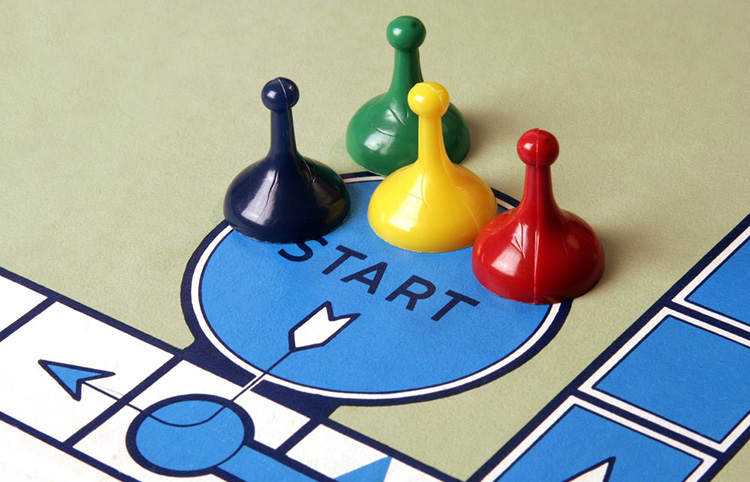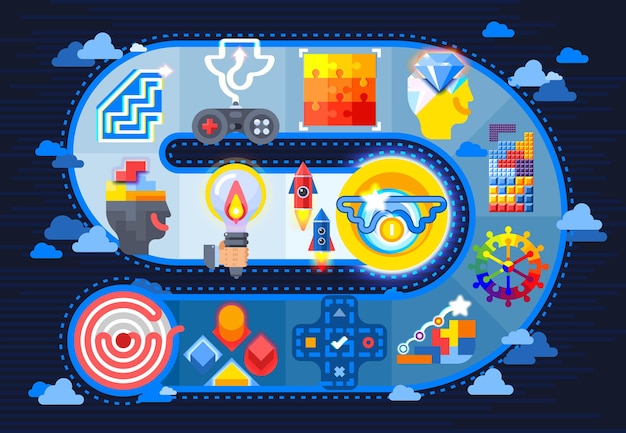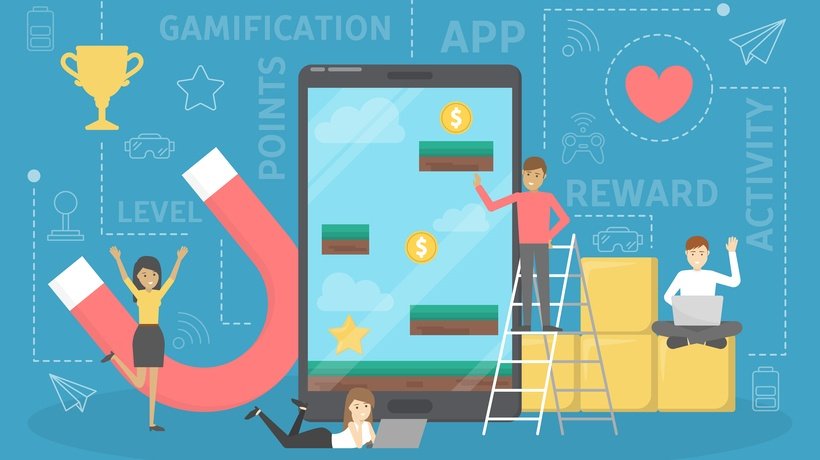Catching the Attention of E-learners with Gamification
Attention is a valuable attribute in learning. The more you pay attention to something, the easier it is to understand and remember the essential elements of the topic when necessary. However, in our technologically-advanced society, it is easy to get distracted by the things around you. There are always new movies to binge-watch, games to play, and social media to keep up with your friends and people you find interesting which makes it challenging for a person to keep their attention on something for long.
In the area of learning, the presence of distractions poses a challenge that has made educators and interested persons look for ways that can make learning engaging and entertaining enough to help people overcome distractions and motivate them to push further; this is where gamification comes in.
Gamification is the use of game techniques, activities, and rewards in a non-game context. For example, playing educational games with peers and competing for positions on the leaderboard. The purpose of this is to boost the brain’s ability to absorb new information by presenting it in an audio-visual manner. It is slowly becoming adopted in the education sphere as a way to grow students’ interest in learning, increase their participation in courses and their learning experience.
How does gamification work? The success of gamification in learning boils down to our psychology. When there is a difficult task in front of you, you’ll have to dig deep to find the perseverance and courage to stick with it to the end; the moment you can’t find the drive to keep going, you give up and move to something more interesting.
By engaging two channels of the brain –auditory and visual, gamification creates the feeling of motivation and ambition as the body releases dopamine to make the experience more satisfying. The possibility of getting a reward after the task ends or moving to a higher level, allows you to stick to the task even when it gets difficult. Also, since gamification puts students directly in charge of their success, it pushes them to work harder, learn from their mistakes, and try again until they achieve good results.

Benefits of Gamification in E-Learning
The US News and World Report in 2016 noted Andrea Eberly’s opinion on gamification in learning. As an instructional designer at the New England College of Business, she noted ‘Gamification allows students to become more active learners by inserting themselves into different scenarios rather than passively listening to lectures and reading course materials on their own.’ This goes to show that when included in e-learning, has several benefits:
Learning becomes fun: Gamification can make any subject fun and it is suitable for all age groups. If utilized properly, the competitive elements of gamification along with the rewards attached to tasks can make learning informative and interactive without losing the essence of the activity.
Increases the drive to learn: Learning something new can be a challenging task but gamification can simplify the learning process. When you succeed and get rewarded for it, it creates a natural high which makes you want to do more and helps you retain information better especially when your previous knowledge of concepts is important in helping you move forward.
Helps students overcome the fear of failure: Everyone experiences failure and in e-learning, failing is important because it provides experiences that we can learn from; but the fear of failing can be crippling. When a student sits down to read in preparation for a test, exam, the fear of failing can prevent them from learning the key points of a lesson as they are trying to take in as much information as possible within a short period.
Gamification removes that fear- that’s why students can replay a level over and over again despite ‘game over.’ Failure is not seen as something to be embarrassed about as they unconsciously realize that it’s part of the process of learning.
Makes Progress Visible: Whether it’s by leveling up on the leaderboard, seeing changes in your progress bar, earning points, or through personalized mechanisms, it is easy for students to note their progress and the journey ahead of them. It also makes it possible for students to examine how far they’ve come and if they should do something different to see more results.
Allows learners to experience real-world applications of what they’ve learned: Traditional modes of learning hardly provide an avenue for students to practically implement what they’ve learned in the classroom which can affect their understanding of it.
When learners are allowed to apply the information they’ve gotten in practical situations, it cements their understanding of the subject and how it impacts their lives daily.

How to use Gamification in E-Learning
Although gamification is a great tool in e-learning, it can make learners lose sight of what is important if it is not used properly. When using this tool to aid e-learning, you should:
Maintain Relevance: Focus on topics that will make students curious to learn and motivate them to see the process to the end. Each stage of the process should be filled with realistic and relevant content that will help students pay attention.
Novelty helps with focus: If activity remains the same to the point where it becomes predictable, it gradually becomes boring and can make you lose focus. While the activities should be centered on the subject matter, they should include new elements and information and regular intervals to help spike learners’ attention.
Intellectually and emotionally engaging without complications: The videos and activities should be interesting, appealing, useful, and easy to absorb. It should contain content that will make learners stop and think or share ideas with their peers on what the solution should be.
The content can be divided into small pieces and students should have the opportunity to control how fast they learn. If you want to fuel the spirit of healthy competition among students, you can include fun quizzes or challenges that will make them actively compete with one another and explore different options before arriving at the right one.
Every sector of our society is changing every day and there is no reason why the educational sector should be left behind. Continuous learning is the backbone of every successful society and we should take advantage of the tools available to create a more engaging environment for learning.






Leave a Reply